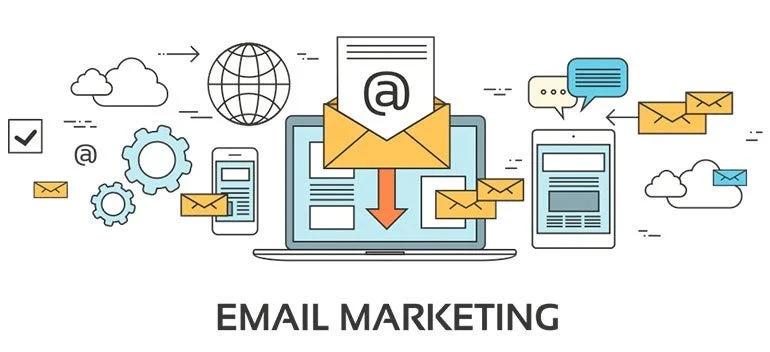You’ve written a book, published it, and even gotten some great feedback… but now what? How do you keep your readers engaged, attract new ones, and turn that interest into sales? The answer might be simpler than you think: your author mailing list.
As an author, your mailing list can be one of the strongest assets you have. In a world full of changing social media algorithms, publishers still depend on readers who already trust them. If you build a strong author mailing list, you can sell books more reliably.
In this article, we’ll walk through how you or a trusted book publisher can build a mailing list that actually leads to book sales.
Why a Mailing List Matters
- You own the audience. When you collect email addresses, unlike platforms where an algorithm can drop you, you hold a direct line to readers. Email is personal, intimate.
- Higher conversion rates. According to OptinMonster, email marketing offers $36 return for every $1 spent. That’s huge compared to many other methods.
- Better engagement. Average open rates in many industries range from 30-40%, click rates vary but are higher if your content is relevant. Also, those readers are warmer, they already signed up because they like your genre or style.
- Helps Book Publishers and authors alike. Book Publishers that help authors understand list-building empower those authors to have launches, pre-orders, and sales without paying huge ad budgets.
Step 1: Set Up the Foundations
To build a mailing list that sells books, you need a good base:
- Choose a trusted email service provider (ESP). You can check out ConvertKit, MailerLite, or ActiveCampaign. They allow segmentation, automation, and good design. Book Publishers should pick one with good deliverability and ease of use.
- Create a dedicated landing page or signup form. On your author website, make signup forms prominent. If you don’t have a full author site, a simple landing page works. Book publishing services can do this for their authors.
- Offer a lead magnet (freebie) that aligns with the kind of books you write. For fiction that might be a free chapter, a deleted scene, or short story. Non-fiction might offer a checklist, cheat sheet, or video. According to ActiveCampaign, free chapter giveaways or pre-order bonuses are among the most effective list-building tools.
Step 2: Generate the Right Traffic
Signing up forms and freebies are great, but you need people to see them:
- Use social media & content marketing. Write blog posts, do guest posts, use Instagram, Twitter, TikTok, wherever your readers are. Always have a call-to-action pointing to your email list.
- Leverage Book Publishers’ networks. If your work is being published by a book publishing service, then use that infrastructure. It includes publisher newsletters, cross-promotion with other authors under the same publisher, sharing in catalogues.
- Paid ads (if budget allows). Small spend on Facebook or Instagram driving to the freebie can be worth it. But only after you have good content, because you want to retain people once they land.
Step 3: Nurture Your Subscribers
Getting email addresses is only half the job. To actually sell books, you need to build trust and engagement:
- Welcome sequence. Send 3-5 emails when someone joins. Introduce yourself, share what kind of books you write, what they can expect, maybe share your journey, or a special free content.
- Regular value-adding content. Don’t just write “Buy my book” emails. Share behind-the-scenes, character interviews, tips, favorite reads, or short stories. Make readers feel included.
- Launch sequences. When you have a book coming, send teasers, cover reveals, preorder reminders, launch day push. Because your list already knows you, they are more likely to buy.
Step 4: Monitor, Test, Improve
- Track metrics. Open rates, click-through rates (CTR), and conversion rates (how many of your subscribers actually click through and buy).
- A/B test subject lines and email content. Sometimes just changing a phrase or image gives big gains.
- Refine your lead magnet. If people sign up but never open your emails, perhaps your sign-up promise isn’t matched by what you send.
Step 5: Use Book Publishing Services Wisely
If you are working with or through a company like Book Publishing, make sure you integrate their services into your mailing list plan:
- They can help you build professional covers, formatting, editing, everything that make your book look more trustworthy, which helps the conversion when you promote via emails.
- Ask them if they offer promotional tools or partnerships with other authors. Sometimes Book Publishers have cross-author promos or shared newsletters, which expose you to more readers.
- Use their mailing or announcement list (if they have one) to boost launches: Book publishing can send announcement emails about your new release to their audience, which adds credibility.

Real Stats to Motivate You
- For every $1 spent on email marketing, companies see an average return of $36.
- Email marketing delivers one of the highest ROIs of all marketing channels.
- Average open rates across email campaigns are often between 30-40 % plus, depending on your genre and how well you nurture your list.
- Deliverability (how many emails actually land in the inbox vs spam) is around 80-85 % on average. Keeping bounce rates low, cleaning your list helps.
Key Takeaways
If you want a mailing list that sells books, not just collects emails, focus on:
- Growing quality over quantity: readers who care, who will buy.
- Providing real value, not just pushing book sales.
- Using smart tools and metrics.
- Working with Book Publishers or services like Book publishing to amplify reach.
Build an email list, connect with readers, grow your audience, and turn subscribers into consistent book sales.
Conclusion
By using solid email marketing strategies, you make your book launches stronger, you build trust, and you give your readers reasons to buy. Book Publishers have long understood this, and now it’s your turn. Start early, build well, and your author mailing list will become one of your best-selling tools.
Recent Post
-
01 Oct 2025The Psychology of Storytelling: Why Self-Published Books Connect So Powerfully with Readers
-
29 Sep 2025Dispelling the Old Myths: What the Public Gets Wrong About Self-Publishing in 2025
-
26 Sep 2025From Doodles to Drafts: Unusual Creative Rituals of Famous Authors
-
25 Sep 2025When Ink Meets Algorithm: How the Digital Shift Is Changing Book Publishing
-
24 Sep 2025The Publishing Future: How Technology and AI Are Changing Self-Published Books
-
22 Sep 2025Turning Readers into Fans: The Power of Community-Building for Self-Published Authors
-
16 Sep 2025How to Build an Email Marketing List That Actually Sells Books
-
15 Sep 2025How to Write a Romance Novel: From First Glance to Happily Ever After
-
04 Sep 2025Amazon Self Publishing 101: Everything You Need to Know
-
01 Sep 2025Lost in Publishing Lingo? A Glossary for Aspiring Authors
-
21 Aug 202510 Easy Steps to Publish a Comic Book in 2025
-
20 Aug 2025An In-Depth Guide to Book Pricing
-
16 Aug 202510 Mistakes New Authors Make (and How to Avoid Them)
-
13 Aug 2025Top 10 Reasons to Hire a Book Writing Company in 2025
-
07 Aug 2025How to Price Your eBook for Maximum Profit

